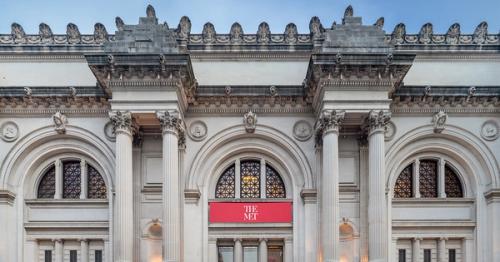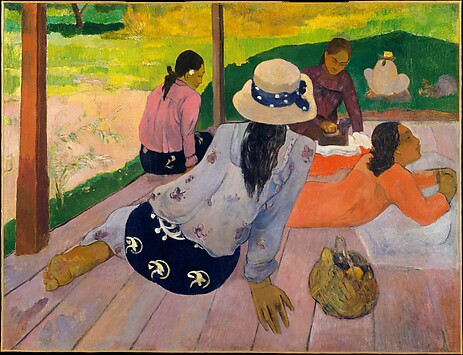The legendary, pioneering French artist who famously left his family and a career in finance to paint and live like a native in the South Seas, Paul Gauguin in fact began sailing to far-off lands during childhood. As a boy he lived for a time with relatives in Peru, and in his teens, in the merchant marine and the military, he visited South America, India, the Mediterranean, the Black Sea, and the North Sea. He believed firmly in his difference, often referring to himself as a "savage," and once he discovered his passion for art he had to create forms that were original and unique. "What does it matter that I set myself apart from other people? For most I shall be an enigma, but for a few I shall be a poet ...," he wrote. Thus Gauguin traveled widely, seeking inspiration for a radical new artistic vision. He tried Brittany, where he worked together with a group of followers. There Gauguin discovered a wellspring of his art: an intense desire to capture the soul of a naive culture. In France he also went to Provence, painting briefly in the company of Van Gogh. He moved farther and farther afield, to Panama and Martinique, settling at last in Tahiti. Finally he found his resting place in the distant Marquesas Islands. In these exotic ports if call Gauguin liberated his art from the here and now, creating a subjective reality of imagination and dreams in vividly colored, highly abstract paintings depicting native life an din rough ceramic sculptures and carved reliefs. "He's in another world," remarked the Impressionist painter Camille Pissarro. This volume accompanies a major exhibition of Gauguin's work in New York collections held at The Metropolitan Museum of Art, New York. Surprisingly, the first major show devoted to Gauguin in New York since the Metropolitan Museum presented a retrospective of his work in 1959, it anticipates the centennial of the artist's death in 1903 and signals the ninetieth anniversary of his debut in New York collections. Four authors from the Metropolitan Museum illuminate aspects of the subject in their texts. Colta Ives, curator in the Department of Drawings and Prints, explores the development of Gauguin's art in the context of his travels. Susan Alyson Stein, associate curator, Department of European Paintings, discusses the history of the collecting and exhibiting of the artist's work in New York. Conservator Charlotte Hale treats the technical examination of his paintings and the light it sheds on issues of authenticity. And conservator Marjorie Shelley writes about the materials and techniques Gauguin employed in his works on paper. In addition, many revealing excerpts from Gauguin's letters and other writings—he was a prose stylist of distinction—are included. All works in the exhibition, as well as rich comparative material, are reproduced. Notes, a bibliography, a checklist of works in the exhibition, and an index are supplied.

















